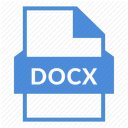The Use of Lembar Kerja Siswa as a Learning Medium among Indonesian High School Students
DOI:
https://doi.org/10.18196/ftl.4242Keywords:
LKS, reasons for using LKS, challenges of using LKSAbstract
One of the learning media used by Indonesian high school students to support their learning is in the form of a student worksheet, commonly called Lembar Kerja Siswa (LKS). This study aims to examine the reasons why Indonesian high school students used LKS as their learning media and the challenges they faced in using LKS both during the teaching and learning process in the classroom and in their independent learning. This research was conducted at one public school in Yogyakarta, Indonesia. Four students who used LKS during their English lesson and in their autonomous learning were purposefully selected as the participants of the study. To obtain the data, one-on-one in-depth interviews were administered. The results of the study revealed that the reason for using LKS was to support their learning due to its content, usefulness, handiness, and affordable price. Nonetheless, the participants also found that LKS was challenging to use because of its short explanation, lack of questions, the ambiguity of answers, and poor face validity. At last, suggestions to improve the use of LKS as a learning medium were addressed.References
Adi, T. W. (2016). Penggunaan LKS sebagai tindakan rasionalitas guru dalam proses pembelajaran. Surakarta: Universitas Sebelas Maret .
Arsyad, A. (2005). Metode Pembelajaran. Jakarta: PT. Raja Grafindo Persada.
Ardhiantari, W., Fadiawati, N., & Kadaritna, N. (2015). Pengembangan LKS berbasis keterampilan proses sains pada materi hukum-hukum dasar kimia. Jurnal Pendidikan dan Pembelajaran Kimia, 4(1), 312-323.
Barus, S., Siagian, S., & Saragih, A. H. (2017). The use of student worksheet to improve writing ability of descriptive text. Advances in Social Science, Education and Humanities Research, 104, 344-347.
Cohen, L., Manion, L., & Morrison, K. (2011). Research methods in education (7 ed.). London: Routledge.
Fitriana, T. K. (2019). Senior High School Students' Perception on The Use of Lembar Kerja Siswa in English Learning. Yogyakarta: Universitas Muhammadiyah Yogyakarta.
Jumairi. (2015). Pemanfaatan bahan ajar lembar kerja siswa (LKS) untuk meningkatkan efektifitas pembelajaran bahasa Indonesia kelas IX SMP Negeri 5 Tenggarong. Jurnal Cemerlang, III(1), 9-18.
Lismawati. (2010). Pengoptimalan penggunaan lembar kerja siswa (LKS) sebagai sarana peningkatan prestasi belajar pendidikan agama Islam di SMA Raudlatul Ulum Kapedi-Sumenep. Malang: Universitas Islam Negeri Maulana Malik Ibrahim.
Majid, A. (2008). Perencanaan Pembelajaran (Mengembangkan Standar Kompetensi Guru). Bandung: PT Remaja Rosdakarya.
Purwono, J., Yutmini, S., & Anitah, S. (2014). Penggunaan media audio-visual pada mata pelajaran ilmu pengetahuan alam di Sekolah Menengah Pertama negeri 1 Pacitan. Jurnal Teknologi Pendidikan dan Pembelajaran, 2(2), 127-144.
Putra, K. K., Wuisan, P., & Listiani, T. (2016). Penggunaan lembar kerja siswa (LKS) untuk meningkatkan hasil belajar kognitif materi bangun ruang sisi lengkung pada peserta didik kelas IX-B SMP XYZ Sentani Papua. A Journal of Language, Literature, Culture, and Education, 12(2), 42-59.
Wahdah, N. (2016). Efektivitas pemanfaatan lembar kerja siswa (LKS) dalam meningkatkan hasil belajar pendidikan agama Islam peserta didik kelas V SDN 21 Temban Kec. Enrekang Kab. Enrekang. Makassar: Universitas Islam Negeri Alaudding.
Downloads
Published
How to Cite
Issue
Section
License
Copyright
Authors retain copyright and grant the journal right of first publication with the work simultaneously licensed under a Creative Commons Attribution-ShareAlike 4.0 International License that allows others to share the work with an acknowledgment of initial publication in this journal.
Authors are permitted and encouraged to post their work online (e.g., in institutional repositories, social media account, or on their website) after the article getting published in the journal, as it can lead to productive exchanges and earlier and greater citation of published work (See The Effect of Open Access).License
You are free to:
- Share — copy and redistribute the material in any medium or format
- Adapt — remix, transform, and build upon the material for any purpose, even commercially.
Attribution — You must give appropriate credit, provide a link to the license, and indicate if changes were made. You may do so in any reasonable manner, but not in any way that suggests the licensor endorses you or your use.
ShareAlike — If you remix, transform, or build upon the material, you must distribute your contributions under the same license as the original.
- No additional restrictions — You may not apply legal terms or technological measures that legally restrict others from doing anything the license permits.


.png)





